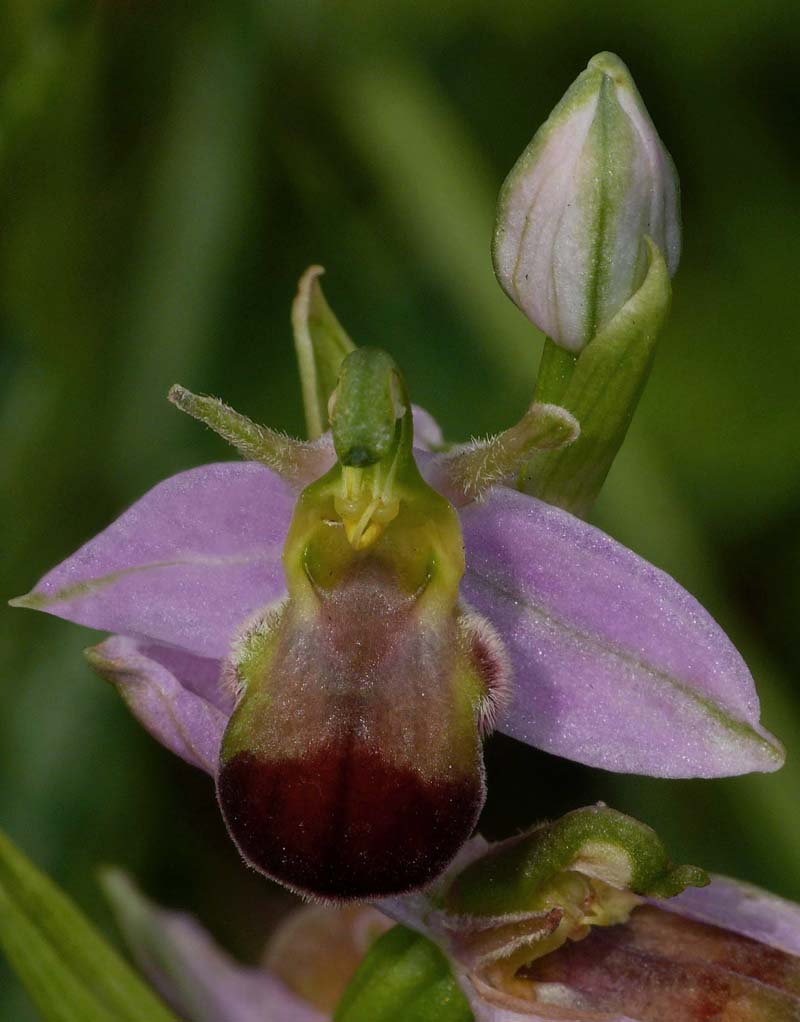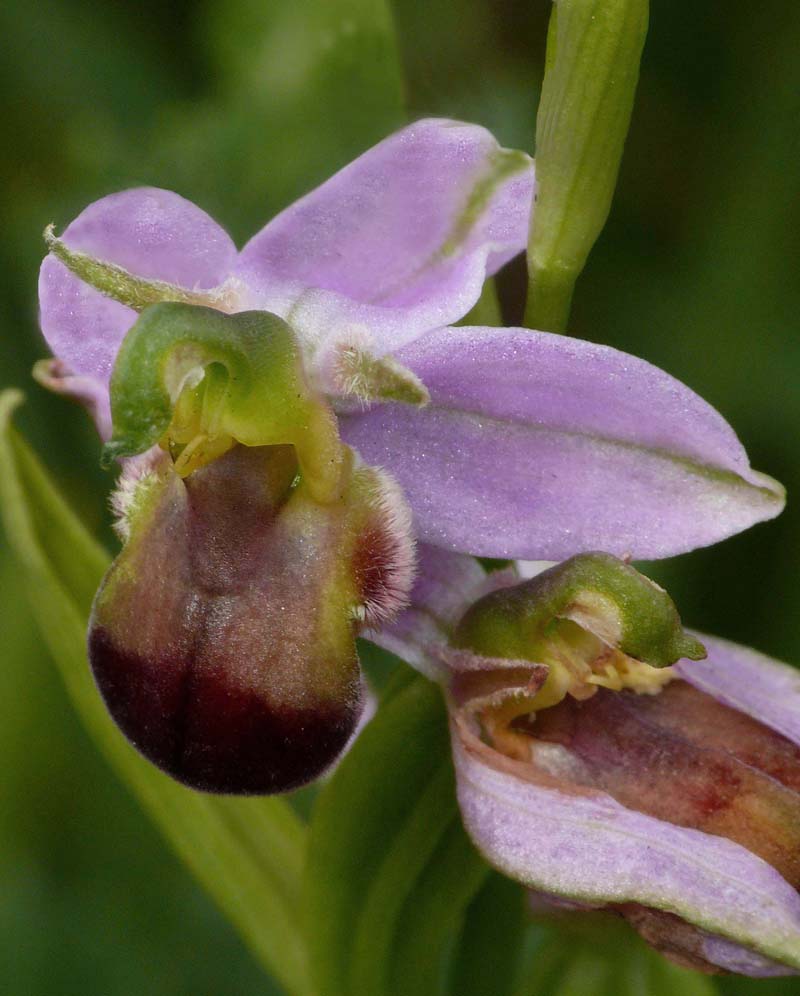O. apifera was first described by Hudson from England as far back as 1762. Its name refers to the flowers resemblance to a bee and accordingly the species has long been commonly (and affectionately) known as the Bee Orchid.
It's a widespread orchid with a distribution across temperate and Mediterranean Europe as far east as the Caucasus. In its favoured locations it can be abundant and its choice of habitat is wide, ranging from the driest chalk grassland and garrigue to wet even swampy conditions. It predominantly favours full sun positions but will tolerate (though not relish) even significant shade. O. apifera is largely self pollinating and this autogamy seems responsible for the frequent appearance of variant plants, some of which, although not of evolutionary significance occur on a sufficiently regular basis to have acquired formal varietal status.
O. apifera var. bicolor is one of the commoner variants and occurs throughout the range of the nominate species though it appears to be particularly frequent in the more western parts of that distribution. Its appearance is distinctive and although general shape and configuration are normal, colouration is very different. It completely lacks a speculum and the lip is divided into two zones of complexion, the larger basal area being a dull greyish brown and the distal portion a deep chestnut. A frequently encountered exception to this is depicted in the final three pictures which feature examples from Istria, where the upper lip is bright yellow and the sepals pure white. The pictures come from Warwickshire, England and Croatia, dating from the 16th of June and 5th of May respectively.









